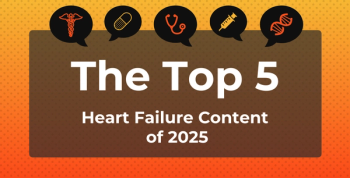
Older, White, and Rural Women Remain at Risk Despite Decline in US Ovarian Cancer Mortality: Muhammad Faizan, MBBS
US ovarian cancer mortality declined from 1999 to 2020, but significant disparities remain among older women, non-Hispanic White women, and those living in rural areas, as well as in the Northeastern and Midwestern regions, according to Muhammad Faizan, MBBS.
While the overall age-adjusted mortality rate for
In part 1 of an interview with The American Journal of Managed Care®, Faizan discusses key findings from the recent
This transcript was lightly edited; captions were auto-generated.
Transcript
Can you summarize the key insights from your analysis of US ovarian cancer mortality trends from 1999 to 2020?
Over the 21-year period that we analyzed, from 1999 to 2020, the ovarian cancer–related mortality in the US declined markedly. Now, there were around 337,619 deaths among women aged 25 and older in the US. All in all, the age-adjusted mortality rate declined from around 14.6 per 100,000 to around 10.1 per 100,000 in 2020. I know these are all numbers, so to roughly put this into perspective, I would say that there was around a 30% drop in the age-adjusted mortality rate when it comes to ovarian cancer-related mortality.
The Joinpoint Regression Program, which we also used in our research, tells us the exact points in the study period where there is a change in the age-adjusted mortality rate. For our research, the major inflection point was 2003. What we saw in our research was that from 2003 onwards, there was a yearly decrease, and it was statistically significant, of around 2.3%.
When you collectively put all of this together, obviously, this sounds like good news, that the ovarian cancer-related mortality is decreasing. However, there were inconsistencies when we looked at different groups. For example, when we did our racial analysis, we saw that non-Hispanic White women had the highest age-adjusted mortality rate, as compared with the other races.
Geographically speaking, we saw that the Northeastern and Midwestern regions are the areas that have the heaviest burden, while there were state-level variations as well. For example, we saw that Hawaii had the lowest age-adjusted mortality rate, and Oregon had the highest age-adjusted mortality rate. Interestingly, a rural-urban divide was also seen in our research. We saw that metropolitan areas had the steepest declines in mortality.
Finally, when we did our age group analysis, we saw that older women, who in our case were 65 years and older, had a significantly higher age-adjusted mortality rate as compared with the 2 other groups, which were the middle-aged and the young age groups.
If I were to sum it up, I would say that non-Hispanic White women, older women aged greater than 65 years, the Northeastern and Midwestern regions, states like Oregon, and rural areas are the key areas that we should focus on and that have the highest age-adjusted mortality rate when it comes to ovarian cancer.
Newsletter
Stay ahead of policy, cost, and value—subscribe to AJMC for expert insights at the intersection of clinical care and health economics.







































